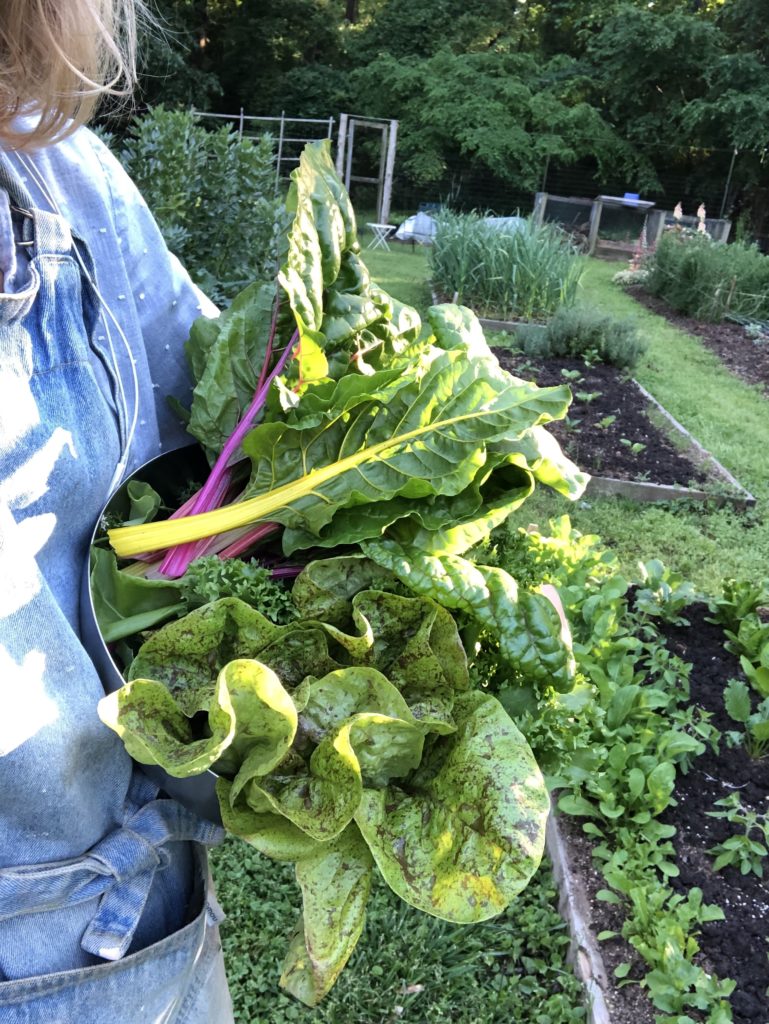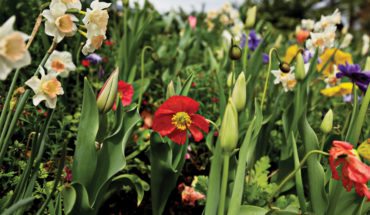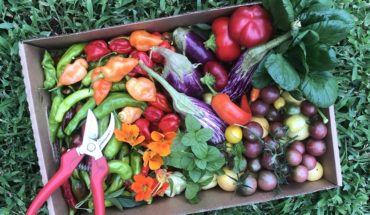“May in the garden feels almost utopic. As verdant growth multiplies by the minute, spring flowers billow like fine gowns and spry seedlings set up camp,” writes our garden writer Hannah Ross this month.
Words and photos Hannah Ross
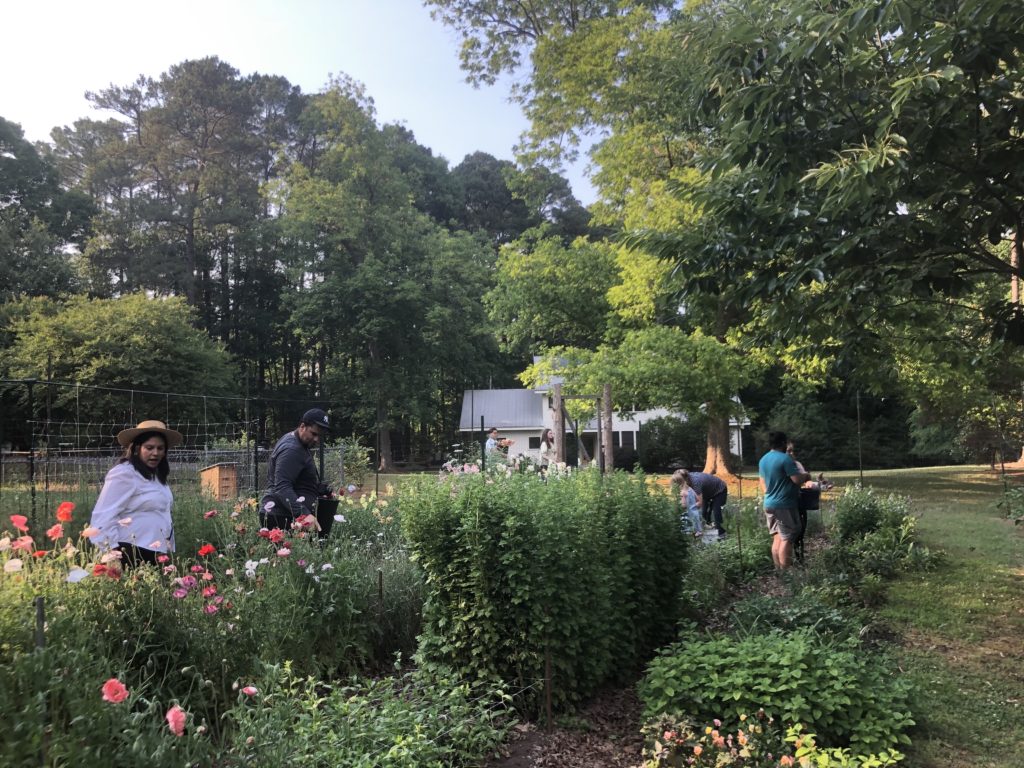
The bugs and weeds have yet to overwhelm, and there is a giddy conviviality as pollinators flock to beckoning flowers. The golden bookends of dawn and dusk open wider each day. There’s something nurturing about this month— winter is behind us, and we are held in a moment of gentle warmth, with perfect conditions for blossoming. What a perfect month to honor the mothers in our lives.
While the Mother’s Day season is a sweet, contented time for many, it can also spur feelings of grief and loss. This is true for me— I lost my mother seven and a half years ago. I adopted my garden space and became a floral designer not long after she died, and I worried about how I’d handle making bouquets for other people’s mothers come May. But there is something about the tactile experience of nature’s beauty— touching it with my hands, breathing in its fragrance, dipping into the pool of creation— that I have found healing, year after year, in the face of that grief. To turn a deep ache into something ephemerally joyful, and to use it to honor motherly love wherever it exists— feels helpful. While the pain of loss still stings, this practice nudges within me a kind of softening. It’s a strange mystery, but the garden always makes me feel less lonely, and it provides a safe space for me to feel the sting of loss that lingers. If you are hurting this season, I wish for you that space. Maybe you will find it in the garden, too.
I hope this collection of May gardening tips encourages you to savor the beauty of this moment, plant a variety of annuals, bring greater ease to your weeding routine, support your plants for the long haul ahead, and honor motherly love in a way that feels nourishing to your own story.
Savor Spring Beauty
This is a season of ruffled opulence, as classic favorites like irises, peonies, poppies, larkspur and clematis burst into bloom. It’s almost too much to have all of these flowers, all at once— how could we be so lucky? Newly awakened perennials like columbine find their crystalline voices, and hardy annuals like larkspur shine— knowing their time here is brief. If you planted in fall for spring blooms, bask in the glow of what you’ve grown. I like to stroll through my yard in the morning with a cup of coffee— or in the evening with a cold beer— to notice what’s new, remember what resonates, and be present in this glimmering moment.
If you don’t have much growing or are new to this whole experiment, enjoy the ingenuity and labor of other gardeners. Wander through neighborhoods, arboretums, and botanical gardens. Compliment gardeners you see working on a job well done, and snap photos of favorite specimens, filing away inspiration for your future plantings. Pick up a locally grown bouquet at the farmer’s market. And If you’re unsure when to plant hardy annuals, perennials, and bulbs for spring blooms, check out my columns from October and November for tips.
Reckon with the Weeds
Use this amenable moment in the garden to gain momentum in tasks that will only get harder. Weeding tops this list. While there’s no way to eradicate weeds entirely (and synthetic herbicides will only compound your gardening woes), there are reliable ways to make weed pressure less constant and cumbersome.
The best thing you can do for your weeding routine is to start noticing weeds as tiny seedlings, and to invest in tools that will help you nix weeds at this young, tender “thread stage.” Instead of pulling mature weeds one by one, notice them as they emerge and use a collinear or scuffle hoe to swiftly slice them off at root level, dozens at a time. Almost like shaving, using these long-handled hoes allows you to weed ergonomically, simply gliding or scooting the blade through the surface layer of the soil. The blades are designed to fit in between rows of veggies, herbs or flowers. The collinear hoe is only useful for thread stage weeds, while the scuffle hoe can handle slightly larger roots with its back-and-forth action. Eliminating weeds at thread stage makes weeding much easier, while preventing invasive plants from dropping seeds (which compounds weed problems for seasons to come).
Last month I addressed the importance of mulching before summer sets in; this is another helpful strategy for minimizing weed pressure, as well as retaining water and building soil fertility over time. With a dual strategy of removing weeds early and mulching diligently, weed problems become manageable, helping us to avoid the overwhelm that overgrowth brings.
Select Healthy and Diverse Seedlings
As you plant shop this month, select only the healthiest seedlings. Choosing robust baby plants will help ensure they get a solid start and live a long, healthy life in your garden. Look for leaves that are a lush, verdant green— free from yellowing, brown spots, or mildew. Rather than choosing the tallest seedlings, choose those with the sturdiest stems— counterintuitively, the taller seedlings are already stretching to compete, and are weakened by the strain.
To gauge readiness for planting, take a look underneath pots and trays to see if roots are starting to peek through the bottom. Healthy, well-started seedlings will have a nice deep, branching root system. Either underdeveloped roots (only shallowly established in the pot) or tightly wound roots (which we call rootbound) indicate plants likely to experience stress when transplanted. Selecting healthy seedlings will help ward off pests and disease, as plant stress is a magnet for these issues.
Along with shopping for healthy seedlings, opt for a varied mix of vegetables, herbs and flowers. By introducing greater biodiversity into our yards and gardens, we help support myriad microorganisms, pollinators and other beneficial insects, and do our part to support ecosystems and habitats that are increasingly being lost.
Plant Tender Annuals
May is a golden opportunity for planting all sorts of tender annual herbs, flowers, and vegetables. If you haven’t yet amended your garden beds with organic matter— like compost, well-rotted manure or leaf mold— now is the time. If your soil is nutrient deficient, turn to slow-release, organic fertilizers to enrich fertility, and always follow the package instructions.
Some of my favorite annual vegetables include tomatoes (Black Cherry, Speckled Roman, Pork Chop and Garden Peach), peppers (Shishito, Serrano, Ashe County Pimento, and Jimmy Nardello), eggplant (Fairy Tale and Rosita), ground cherry, summer squash, winter squash (Delicata and Honeynut), cucumbers (Mexican Sour Gherkin, Itachi, and Lemon), and yellow wax beans.
Effortless summer cutting garden favorites include zinnias, cosmos, celosia, gomphrena, sunflower, love-in-a-puff vine, giant marigolds, and amaranth. Intertwined with all your flowers and vegetables, try versatile companion plants like borage, nasturtium, calendula, dwarf marigolds (like Tashkent or Lemon Gem), shiso, and basil. Layering vegetables and flowers creates incredible biodiversity, attracts beneficial insects, improves vegetable flavor, and increases pollination. Soon your garden will buzz with beauty.
Succession Plant for Prolonged Harvests
Succession planting is a helpful tactic for enjoying a bountiful, long season of varied harvests. By embracing a routine of planting second and third rounds of favorite flowers, herbs, and vegetables, and trying to plant something new each month, you’ll never be devastated by issues like powdery mildew on your zinnias or mosaic virus on your cucumbers. There is always another plant waiting in the wings, so be ruthless in subbing out underperforming or diseased plants.
May is a popular month for tomato planting, but planting a second round a month later can help stretch your harvest window. To nurture a new tomato planting for June, prune the “suckers” off your existing plants, and allow them to root in a jar of water. Once roots have formed on the snipped stems, pot each new seedling up and let it acclimate to the outdoors before transplanting. By planting a second round of tomatoes, you may have better luck stretching your harvest into early fall. Propagation by cuttings gives you multiple rounds of free plants through the season, and planning for these additional plantings in May helps gardeners sustain their momentum as temperatures rise.
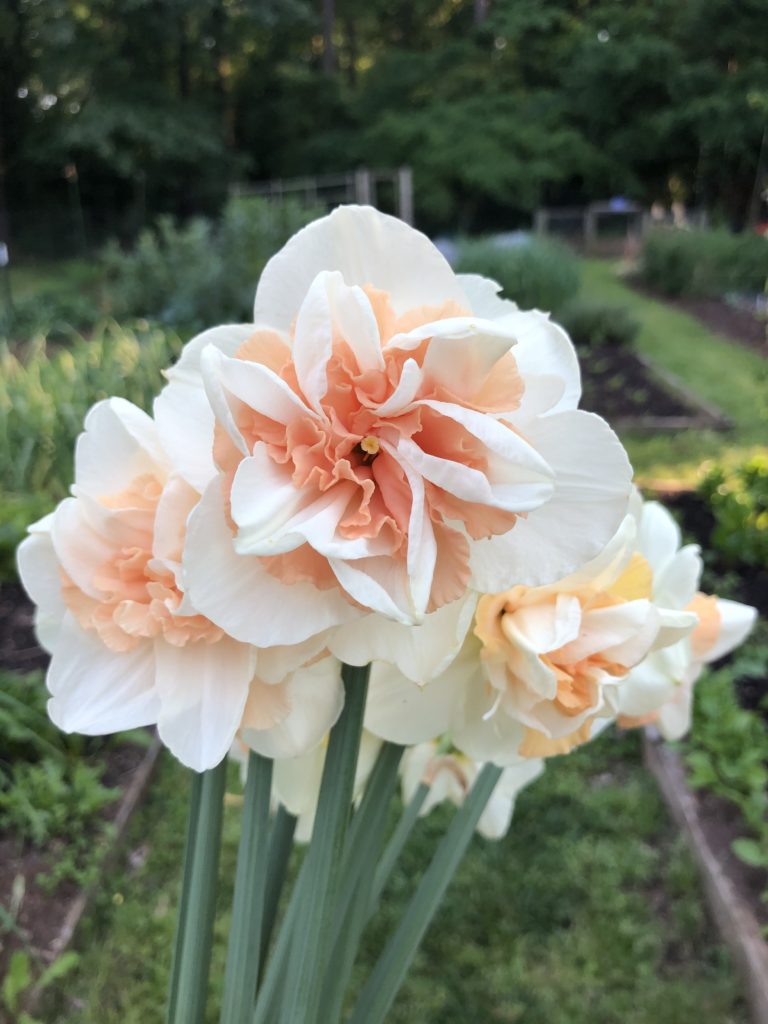
Support your Plants
As plants get established this month, we must provide the support they need to grow successfully— before they get overgrown and unruly. This month, install trellises, stakes, and other vertical and horizontal support structures to help your plants achieve their potential. While vining plants can sprawl along the ground without our help, providing a structure for climbing helps keep plants productive and disease-free. In the case of fruiting and flowering plants, providing support helps ensure that each fruit, vegetable or flower we hope to harvest is usable. Source supplies like T-posts, twine, and netting, or forage for tree branches and bamboo.
While tomato cages are pervasive, they are barely functional and only suitable for determinate tomato varieties, which reach a particular height and stop there (versus indeterminate, which keep growing vertically and vining all season long). Most heirloom and all cherry tomato varieties are indeterminate, so most gardeners need a more effective support than tomato cages. If you’re planting indeterminate tomatoes this year, I recommend using t-posts and twine for the “Florida weave” method, or farmer-educator Josh Sattin’s method, demonstrated helpfully in his YouTube video, A Trellis to Make You Jealous. A quick Google search will serve up many variations on each approach, so do research to discover what’s best for your space, available supplies, and budget.
Honor motherly love in all its forms
It’s fitting that Mother’s Day falls during this time of generous, abundant beauty and nourishment. It’s also an opportune time to shop locally for the mothers and mother figures in our lives— plants from local nurseries, bouquets from local florists, or produce and flowers from the farmer’s market make a perfect gift for the loyal, big-hearted ladies we love and admire. And if you are a mom, treat yourself! Consult our round-up of spring plant sales for several Mother’s Day weekend opportunities, including Plant Delights Nursery’s open garden event, NC Botanical Garden’s native plant sale, and Wake Forest’s HerbFest.
Whatever this time of honoring motherly love stirs up in your heart— warmth, pride, gratitude, loss, hurt, or longing— the garden is a powerful tool for connection and healing. From little joys I know my mother would cherish, to flavors that link me to her memory, to the physical and emotional nourishment I find in the garden that felt tenuous through her illness and death— the garden is a generous well that fills empty spaces and helps us to heal. The garden has helped me see that in spite of the great void that exists where my mother once was, this daily, cyclical connection to the land helps me feel more whole. As you get outside this May, I hope you find a sense of wholeness, too.

